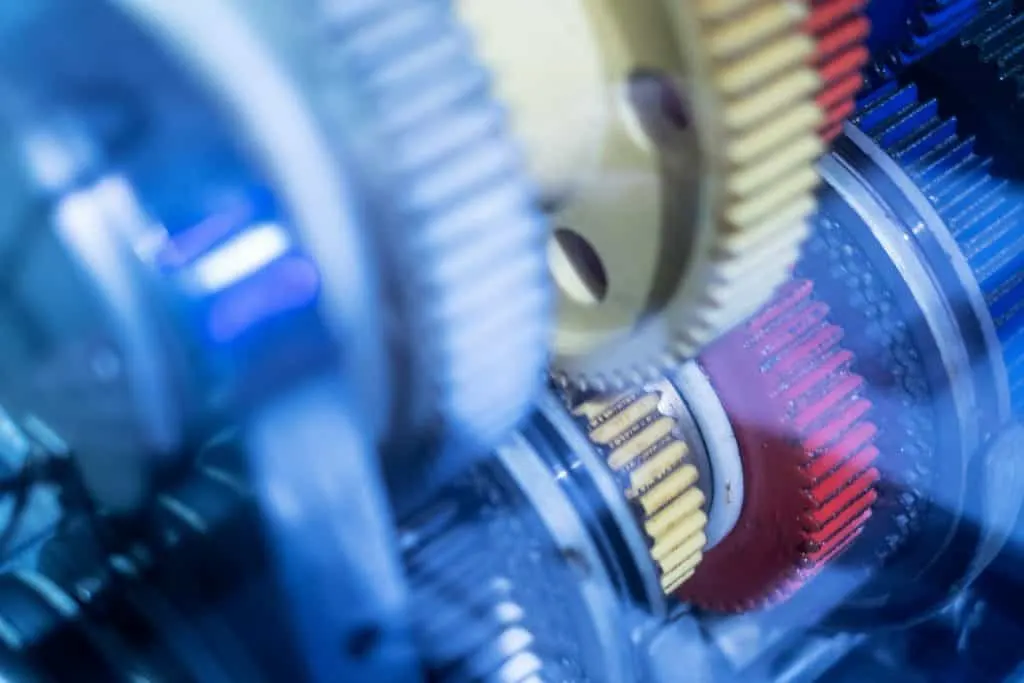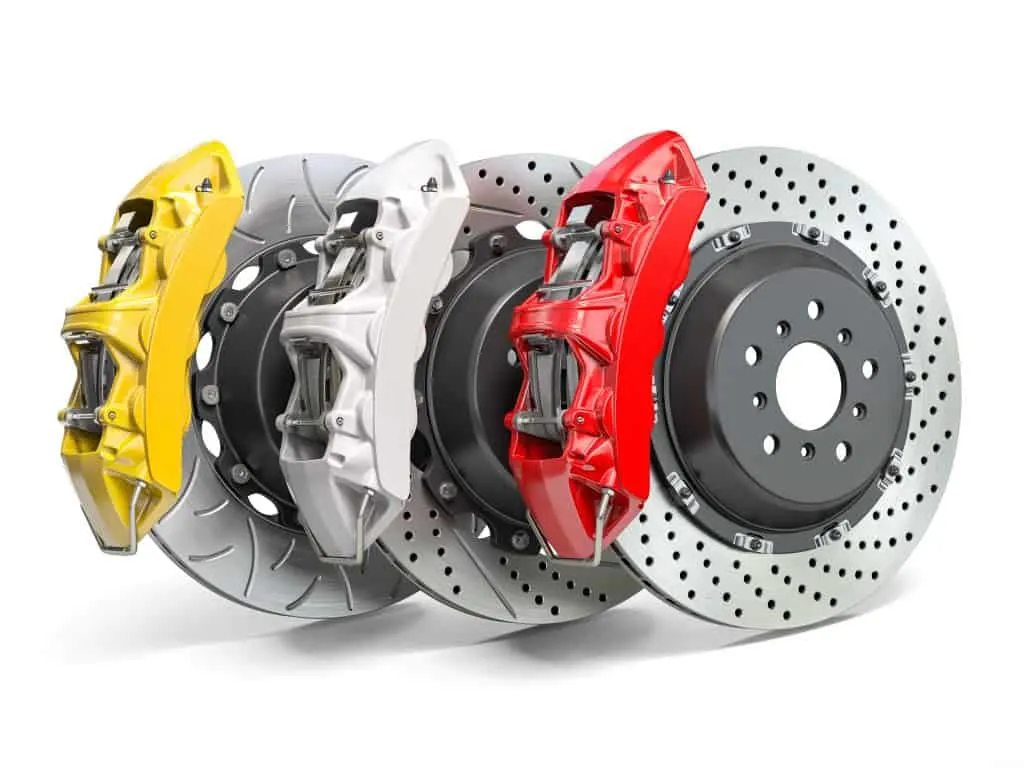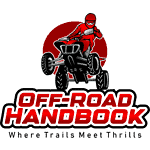The users’ preference is to select the manual or automatic 4WD as both vehicles have significant advancements in recent years. You should consider your budget and type of vehicle while choosing a manual that makes you feel comfortable. You need specific sort of 4-by-4 off-roading skills if you want to drive a manual transmission. These kinds of vehicles are fuel-efficient and provide a more incredible feeling of control. Automatic transmission vehicles overheat easily, so manuals are excellent for intensive driving. So, is manual better for off-roading or not?
Manual transmission is better for off-roading since manual transmission vehicles are considered significant for intensive driving. A manual transmission gives more control over the vehicle on challenging off-road terrains. That is why manual transmission is popular among off-roaders.
Driving a manual jeep seems like an old-school method in off-roading. Although the new vehicles come with an easy-to-navigate version of automatic transmissions, the worth of manual transmissions is still famous among off-road enthusiasts. Here below, we will discuss the manual transmissions providing great qualities for off-roading experiences.
Is Manual Better for Off-Roading? Manual Transmissions:
Off-roading involves the process of riding vehicles on tracks or terrain built up of materials like gravel, mud, rocks, and sands. Competitions are held on such unsurfaced roads using customized cars and are built in a specific way to handle the intensity.
Manual transmission, also known as a manual gearbox, relies on a clutch and needs to be engaged or disengaged using a hand lever or foot pedal. The grip helps to regulate the transfer of torque from the engine to the transmission. There is also a gear selector associated with it.
Why are manual transmissions better for off-roading?
Here we will discuss that why the manual transmissions are better for off-roading:
1. Know What to Expect:
Using a manual, you always know what to expect as it allows more controlled ascents and descents. There are more direct engine braking and downhill stretches. The manual transmissions allow selecting the right gear even on low-traction surfaces, which eliminates the wheel spin.
2. Manual transmissions are fun:
It may seem funny that the car is doing most of our work on our behalf, but it is definitely out of the window. With a manual, you still know that you can eliminate wheel spin all from your skills.
3. Manuals can handle the heat:
It is a strong argument that either automatic transmissions can handle the heat better or manual. We all have to agree that manuals tend to manage heat better. It is suitable for keeping the car’s transmission in the long run.
The Downside of Manuals in Off-Roading
Manuals, although they provide more control on ascents and descents, they are not considered suitable for lower-speed climbs and low-speed driving. Crawling requires a car that comes to a halt, and crawling with a manual means to clutch in and try again and again to get started.
1. Off-roading With Manual:
While using manual, you have to adapt to your driving to different off-roading conditions with which you encounter. Taking your manual 4-by-4 off-roading is quite an experience task, and you can discover its upsides and downsides on different terrains.
2. Rock Crawling:
It is loads of fun to rock crawl with a manual transmission as long as you know what you are doing. To have a safe manual transmission experience, always keep an eye on the place of your wheel and drive with patience.
Manuals give more control on big rocks as you play around the clutch, which might wear it out. Driving on a low-range and low-gear is always best for such kind of terrain, and to avoid oneself from any trouble, always keep a spotter with you.
3. Crossing Rivers of Water:
There is always a thrill of anticipation whenever you are standing near the edge of a river or stream, and you want to go in. The best bet is to put in second gear and drive on low-range to pass through the stream steadily in such a situation. Don’t pick up speed or change the tears as it will let the water get in the clutch, eventually leading to slippage.

4. Driving Uphill:
A manual vehicle is always considered a good option whenever you are driving uphill. It provides you with more control as you can choose to shift gears. It is easy to creep up the hill steadily in second gear. But still, you need some practice in this skill to keep the clutch at a perfect spot to prevent driving backwards or without much wheel spin.
You might lose momentum or slide back if you attempt to pick the speed towards the crest of the hill. Start by building the rate in high gear at the inclined base and then quickly shift to a lower gear. It is advised to do so as you might lose momentum towards the top.
5. Driving Downhill:
Manuals are built for downhill driving and are perfect when it comes to controlled descents. You must put the vehicle in first gear and use the engine braking; otherwise, the car will crawl down the hill at a steady speed. It will allow you to avoid using the brakes constantly.
Driving downhill with an automatic transmission is a tricky affair. Automatics come with downhill assist feature, which is a good thing. It gives you increased control over the vehicle. But, still, you have to lean heavily on the brake if the car decides to change the gears.
6. Driving on Sand or Mud:
If you are not an experienced driver and do not own the right wheels for dune driving, you can find yourself tricky, including the rolling sideways dune. The primary key is to drive the manual transmission by choosing a low gear to keep momentum.
It will prevent you from putting pressure on the clutch or transmission. Another tip is to air down your tires to increase the tread size to get full traction. You can deflate your tires as it ensures that the vehicle’s weight is evenly dispersed to minimize sinking.
Find Out: Toyota RAV4 in Off-Roading- Does it Live Up To The Name?
Tips for Off-Roading with a Manual Jeep:
- If you want to experience mudding in a manual transmission, you need to deflate the tires before entering the mud hole. You should reduce the tire pressure by around 20-24 psi if you have an excellent off-roading tire set like mud-terrain tires. You can also check the depth of the mud and take an idea about the type of mud. It can be restricted by poking the ground with a wood stick.
- Always ensure no hidden logs or rocks under the mud, and if your vehicle has traction control, you can turn it off.
- Make sure to select the best gear to cross the mud hole without changing the spots in the middle of the mud. Changing the gears in the middle of the ground breaks the momentum.
- Always choose one gear and drive on it throughout on that gear as much as possible until you cross the mud hole.
- You can follow the ruts created by the previous drivers if they are not more profound than your tire height. In a situation, if they are more profound, then avoid those ruts as much as possible because it might lead your jeep to get stuck in the middle of the mud.
- In the manual jeeps, you can spin the wheels with the help of clutch and gas pedals. It helps to throw away the mud clots blocked among the tire treads. It will help if you do not unnecessarily spin the wheels or break the momentum.
Automatic Transmissions:
For all those who feel automatic transmissions convenient over manual, here are some reasons which prove that automatic transmission is better for off-roading.
1. Automatic Handles Most of the Work:
Automatic off-roading, including Jeep Cherokee XJs, can do most of the work themselves. It allows you to concentrate on some other aspects of off-roading. There is no need to disturb yourself about operating the clutch, switch, and proper gear.
2. Ability to Start from the Top:
Automatic transmissions allow you to start to form the top, such as a hill. They are better at crawling from the top with low speed.
3. Ability to Halt Completely:
Automatic transmission is helpful if you are on a steep rocky ledge. It enables you to come to a complete halt and is made possible without relying on the clutch, which is considered a huge benefit.

The Downside of Automatics in Off-Roading:
If you want to climb the hill at high speed or try dune driving, then manual is better. Automatic transmissions are considered a better option for low-speed ascents.
Before shifting to a lower gear towards the top, you can build the speed in high gear as momentum is lost. Using autos for descents requires heavy brake application, and transmission does not allow the driver to lock into the first gear. This brings down the possibility of transmission switching into second gear as the drive crawls down a hill.
Pros and Cons Using a Manual Transmission for Off-Roading:
| Pros | Cons |
|---|---|
| Manual transmission burns less fuel in off-roading | There are more wearable parts in manual transmission especially the clutch plates easily wear off and cause premature failures |
| They have more control over the vehicle in most of the off-road terrains | Manuals can break the momentum. Small momentum changes and sudden wheel spinning bog the tires in soft sand |
| It is more responsive to drivers input as automatic transmission does not have a mechanical clutch to connect the engine and transmission system | Automatic gives more control than manual in steep hill-climbing |
| The manual transmission connects with the fluid mechanism | In the case of manual, if you press the clutch in water the water rushes in the clutch system and will eventually cause problems. |
| They offer less transmission overheating as compared to an automatic vehicle | |
| If a clutch fails or transmission wheel damage happens, you are still able to drive the jeep to the safe zone in case of manual transmission damage | |
| The cost repairing of a manual transmission is lower than the automatic transmission |
Tips for Driving Manual Jeeps for Newbies:
If you are a newbie and you want to learn to drive a manual jeep, then here you will get some essential tips to improve the traditional jeep driving skills:
- It is advisable to get used to pedals and gear shifts without starting the engine. Try to practice the muscles to gear stick and pedals. Practice is necessary as we often press the pedals and shift the gears incorrectly without even thinking and checking tachometers.
- Select a suitable place for practising, as an open flat area without a crowd or an empty parking lot where you can train yourself with your jeep. Try to adjust yourself with your seat and lean a bit forward. Feel the depth of the clutch pedal, which can help in engaging with gear.
- Try to use the pedals properly. Start the engine after putting the gear into a neutral position. Shift it to first gear while pressing the clutch pedal to the floor. Release the parking brakes while pushing down the clutch and brake pedals. Gently release the clutch pedal until you feel engaging with the clutch with gears.
Also Read:
Does Off-Roading Void Warranty? How to Check Your Vehicle
Frequenly Asked Questions (FAQs):
Which one is best for four-by-four? Manual or automatic?
Whenever we talk about 4-by-4 transmission, all that depends is a personal preference. If you are an experienced driver and know how to handle the harsh terrain, then manual four-by-four is for you. In case if you are a smooth driver and want to add some safety, then an automatic four-by-four is the best choice for you.
Is it hard to off-road in a manual?
If you are going to drive uphill, then a manual vehicle is always a good option. It is possible to creep up the hill with the vehicle in second gear, but skill and practice are still required to keep the clutch in place.
Do manuals last longer than automatics?
Manual transmissions tend to last longer than automatic transmissions. New automatic transmissions are becoming more efficient now.
Can a manual be a four-wheel drive?
There are only a few sedans and coupes left with AWD and manual transmission as they vanish quickly. All-wheel drives are even rarer now, and those available now are left for enthusiasts.
Can you rock crawl with a manual?
Manual transmission is reliable in the long run, but for rock crawling, automatic transmissions are trustworthy.
Is driving the manual worth it?
Driving the car with a stick shift gives you a better sense of control over the vehicle. You will have an easier time with braking without a torque converter. You will have a much easier time with engine braking too.
Are manual cars faster?
Manual vehicles go faster than automatic cars. It can be fun, but it leads to more tickets and accidents. Manual cars are less complicated than automatics and are less expensive to repair.
Are the manual transmissions better in the snow?
Driving a stick shift is easier in snow as you can control the gears yourself. The car is in more control with a manual as you can ease up on gas if you slip on ice so that wheels can gain traction.
Does cold weather affect manual transmission?
Transmission shifts harder when the temperature gets cold. The hard shifts create increased pressure on the numerous parts, thus increasing the risk of failure later.

This is Surya. I am an experienced off-roader. I have been off-roading for many years across several terrains. I am passionate about 4×4 driving and want to share my knowledge and experience with others.
My goal is to provide you with the most comprehensive and unbiased information about off-roading.
I curated this article through my personal experience and expertise, and I hope it helps you with what you are looking for.

 (+91)9123743026
(+91)9123743026
 24/1 Nibedita Sarani. M.B. Road, Kolkata- 700051, India
24/1 Nibedita Sarani. M.B. Road, Kolkata- 700051, India
Off-Road Diesel 101- All You Want To Know – Off-Road Handbook
Tuesday 15th of February 2022
[…] Why Off-Roading Should be Banned?Is Manual Better for Off-Roading? 4×4 Transmission […]
Top 10 Best Radio for Off-Roading- The Complete Guide – Offroadhandbook
Friday 26th of November 2021
[…] Toyota RAV4 in Off-Roading- Does it Live Up To The Name?Is Manual Better for Off-Roading? 4×4 Transmission […]